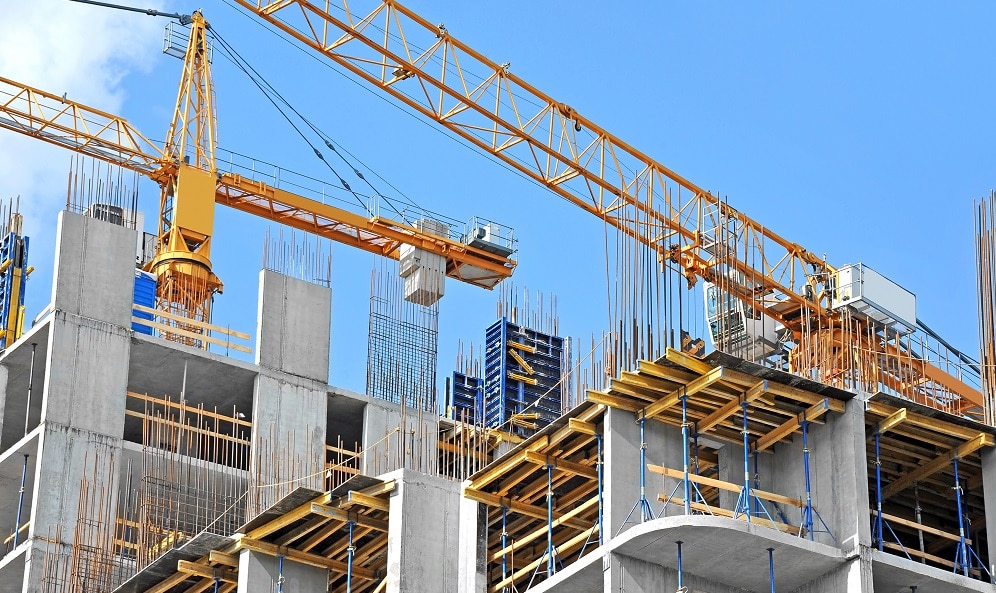Scaffolding Inspection
To ensure safety, it is necessary that you adhere to regular checks before and after scaffolding installation. We can conduct an initial scaffolding inspection and carry out checks on on-going projects. Our inspections are performed by licensed, qualified experts. Ace Scaffolding uses the scafftag system. Site inspection is carried out before and after dismantling each scaffold and the site evaluated against health and safety criteria. We carry out regular inspections and, if necessary, maintenance so that you’ll have your scaffolding available at all times.
At Ace, we’re committed to maintaining health and safety standards on your site, and with a strict Health & Safety Policy and you can always be sure that there will be an on-site representative to keep you informed and up-to-date. Ace Scaffolding is a company that has been in the business of providing scaffolding solutions for years. Our experts are knowledgeable, skilled and experienced in every aspect of the business providing help to get your project up to code and completed quickly. Need more help? Speak to a professional We can also offer advice on scaffolding and access solutions tailored to your individual needs.
We Are Also Available to Offer Scaffolding Related Advice

Inspection Basics for Scaffolding
Ace Scaffolding can conduct an independent statutory inspection, and we run on-site scaffold monitoring services in line with regulation 12(7) of the 2005 Work at Height Regulations. Independent scaffolding inspections are the legal responsibility of the scaffolding user and Ace Scaffolding Eastbourne provides a support service to perform this key duty on behalf of scaffolding customers in Sussex. Users must confirm the integrity of the scaffolding and whether it is safe for use. We have a team of independent and expert inspectors who work in partnership with you to ensure your scaffolding is safe.
Why Does Scaffolding Have to Be Inspected?
Scaffolding is an access form that’s used on most construction sites in various ways. Large framed scaffold forms are prominent on sites where they’re utilised. For renovation work, it could be the first sign that a building project has started from the outside. Working at heights, however, could be highly risky. In 2017/18, there were 35 fatal crashes from height accidents. According to HSE statistics, high-altitude falls accounted for 8% of all RIDDOR non-fatal injuries. The HSE regulates scaffolding use with its enforcement of mandatory safety standards.
When Must Scaffold Inspections Be Done?
The 2005 Working at Heights Standard requires scaffolding to be inspected before first use, and after that, on a weekly basis until it’s removed. Due to its extensive exposure to the elements, it is vital you confirm that your scaffolding is in safe and sound condition at all times. The scaffolding you use must be properly inspected, and it is your responsibility to ensure this has been done.
Who Should Conduct a Scaffold Inspection?
HSE guidelines insist that scaffold inspections should be performed by skilled personnel who have adequate knowledge of the structure and its intended uses, the design of the scaffold, and inspection and maintenance requirements. The CISRS (Construction Industry Scaffolders Record Scheme) qualification is an essential requirement for scaffold inspectors. These qualifications show you have the knowledge and experience to carry out scaffolding work safely, no matter what development site you’re on. However, someone who has received training in inspecting a specific type of scaffold system from an associated supplier or manufacturer can inspect the scaffold structure based on the experience and expertise.
A non-scaffolding builder who has participated in a scaffolding inspection course (for instance, a site supervisor) may be certified to inspect a basic scaffolding structure. A written report on the condition of the scaffolding must be completed at the time of each inspection and kept on hand throughout the project. After the project ends, the completed reports should be kept at a secure office location for the next three months. The scaffold inspection report should identify any deficiencies or situations that could pose a risk to health and safety and any corrective action taken, even if such action is taken without delay. This makes it easy to spot recurring problems.
Make sure each scaffolding report includes the following information:
- Address and name of the person or organization for whom the inspection was carried out The inspector’s full name and his/her position.
- The place, date and time. A description of the scaffolding inspection site or the work area.
- Details of any defects or objects discovered during the inspection that could endanger a person’s health or safety and how to remedy them. Other necessary safety measures.
- If you need help or advice on scaffolding inspections, Ace Scaffolding Eastbourne can help you. We carry out independent scaffolding inspections, monitor scaffolding activities and audits.
- We offer a range of scaffold inspection training for inspectors at various levels.
Our Guarantee
- Over Six Years Experience
- Unrivaled Experience
- An Exceptional Service
- Unbeatable Value For Money
- Industry-approved Scaffolders
- A Full Range of scaffolding Services
- Professional, Reliable and Diligent
- 100% Safety and Satisfaction
How Often Should Scaffolding Be Inspected?
Scaffolding must have passed inspection within the last 7 days to be fit for use. It is critical that all the equipment, tools, and materials used during construction are safe for both workers and the general public. The initial inspection will commence immediately after scaffolding installation. The inspector records the inspection in the form of a handover certificate.

The scaffolding is safe to use as long as it passes the inspection. Regular inspections will then ensure that the scaffolding is safe for use. This should be done on a weekly basis until the scaffolding is dismantled. It is unsafe to use scaffolding that has not passed inspection in the past 7 days. You will need to carry out additional inspections in cases where the scaffolding is changed in between scheduled inspection dates. Additional inspections might be necessary in exceptional circumstances. These situations include stormy weather, with high winds known to cause damage to scaffolding.
This can be the case if something were to affect the scaffolding; for example, a machine or a vehicle. This inspection system should not apply to scaffolds alone but to all construction work platforms with the capacity to drop a person over two metres. A complete scaffold inspection involves an examination of various components including the crash barriers, bracing, and foundation. We are there to find any problems with the structure and fix them as soon as possible. Receiving a scaffold, you can be sure that your structure will be in safe hands.
When Should You Inspect a Harness?
These are the 3 recommended inspection stages:
Pre-Use Testing
To ensure the integrity of the system, a safety inspection must be performed by the user before each shift. Any deficiencies should be reported to your employer.
Detailed Inspection
There should be an inspection on the official record at least every 6 months. The value should be reduced to a 3-month interval for equipment used more frequently in problematic field locations such as steel masts or towers, steel assembly, and scaffolding demolition areas.
Interim Inspection
It is a robust, recorded inspection used as a supplement to the pre-use and detailed inspections. An interim inspection could involve detailed checks if the risk assessment conducted by the employer identifies a threat to lanyard safety prior to the due date of the next detailed inspection. Facilities and equipment that experience higher usage rates or more strenuous use are subject to more frequent interim inspections. Working in harsh environments, involving the use of chemicals, paints, and sandblasting are excellent examples. There are some additives that have acid and alkaline risks, making it crucial to prevent these risks from occurring by performing periodic interim inspections.
Scaffolding Types

Who Is Responsible for The Scaffold Inspection?
The 1999 Health and Safety Regulation makes it clear that employers must evaluate the risks to the safety and health of their employees and the general public who might be affected by the work.
The Construction Regulation (Design and Administration) of 2015 states that commercial project owners must make sure the work activities are not harmful to the health and safety of their employees and the general public. For domestic clients, the contractor, builder, or scaffolder is responsible for health and safety on-site.
Legal Requirements for Scaffold Inspection
- Scaffolding should be examined before use and the structural integrity confirmed in a handover protocol or initial check report.
- Scaffolding must be checked every 7 days. The scaffolding must be inspected regularly for events that could affect the structure’s safety such as changes, adverse weather, or an earthquake.
- Inspection reports must be kept in a format that can be reproduced in printable form and protected against loss or tampering.
- The person responsible for the inspection must prepare a report and communicate it to the employer or client within 24 hours of completing the inspection.
- The construction report must be kept at the job site until completion of construction and then filed in the employer’s office for 3 months afterwards.
We Are Also Available to Offer Scaffolding Related Advice
Information to Be Included in An Inspection Report Include the Following:
- The address and the name of the individual on whose behalf the exercise was completed.
- The venue where the inspection was conducted.
- Description checks of the scaffold.
- The date and time of the inspection exercise.
- Information about issues that have an impact on the health and safety of project stakeholders on-site.
- Steps taken to resolve issues identified during the inspection exercise. Details on important moves.
- The position and name of the person responsible for the report.
Recommendations By NASC
NASC recommendations
- If an employer can successfully prove that a CISRS cardholder has the required experience, they will be regarded as competent to inspect scaffolding which is covered in Parts 1 & 2 of CISRS’s course modules.
- CISRS Booklet Appendix A-F pages 37-52 is the place to look if you need to get CISRS course content. For a person to be certified as a scaffold inspector, he/she must go through the CISRS Basic Scaffold Inspection Training Scheme course.
- If a person has been on a CISRS Advanced Scaffold Inspection Training Scheme, such individuals are considered qualified to carry out inspection of complex scaffold structures if their employer can prove that they have the needed experience and know-how, and successfully passed the knowledge test after course completion.
- This is a very essential course for experienced scaffold inspectors, supervisors, and managers who are in charge of handing over scaffolds, inspections, commissioning, and filling reports in compliance with Work at Height Regulations 2005.
- A CISRS SITS qualification has a validity period of 5 years. Inspectors should also be aware that their qualification period can only be renewed by re-sitting the course after the validity period expires.
- In order to inspect the scaffolds, professionals have to obtain certain knowledge about the particular systems, including how they were designed and assembled.
- There are several ways to achieve this including through the manufacturer, the supplier, or via CISRS-recognised training providers.
We Are Also Available to Offer Scaffolding Related Advice
Our Emergency and Monitoring Scaffolding Inspections
We can provide emergency inspection services and run scheduled exercises for your scaffold systems. Our inspection services include digital photographs as well as a written report.
Frequently asked questions
Should Scaffolds be inspected every day?
Can Scaffolding be Used in the Rain?
Are Scaffolding Tags Legally Required?
How Many Days does a scaffold tag stay valid after an inspection?
What is the Meaning of a Yellow Scaffold Tag?
Is a License Needed Before a Scaffold Gets Erected?
What Qualifications are needed for scaffolding?
How Long Should Scaffolding Record be on Site?
How Long before One Becomes a Qualified Scaffolder?
How frequently should equipment for working at Height be inspected?
What is a Standard in Scaffolding?
When are Inspections needed on a Mobile Scaffolding Tower?
Get in Touch With us for Your Scaffolding Hire Quotes












